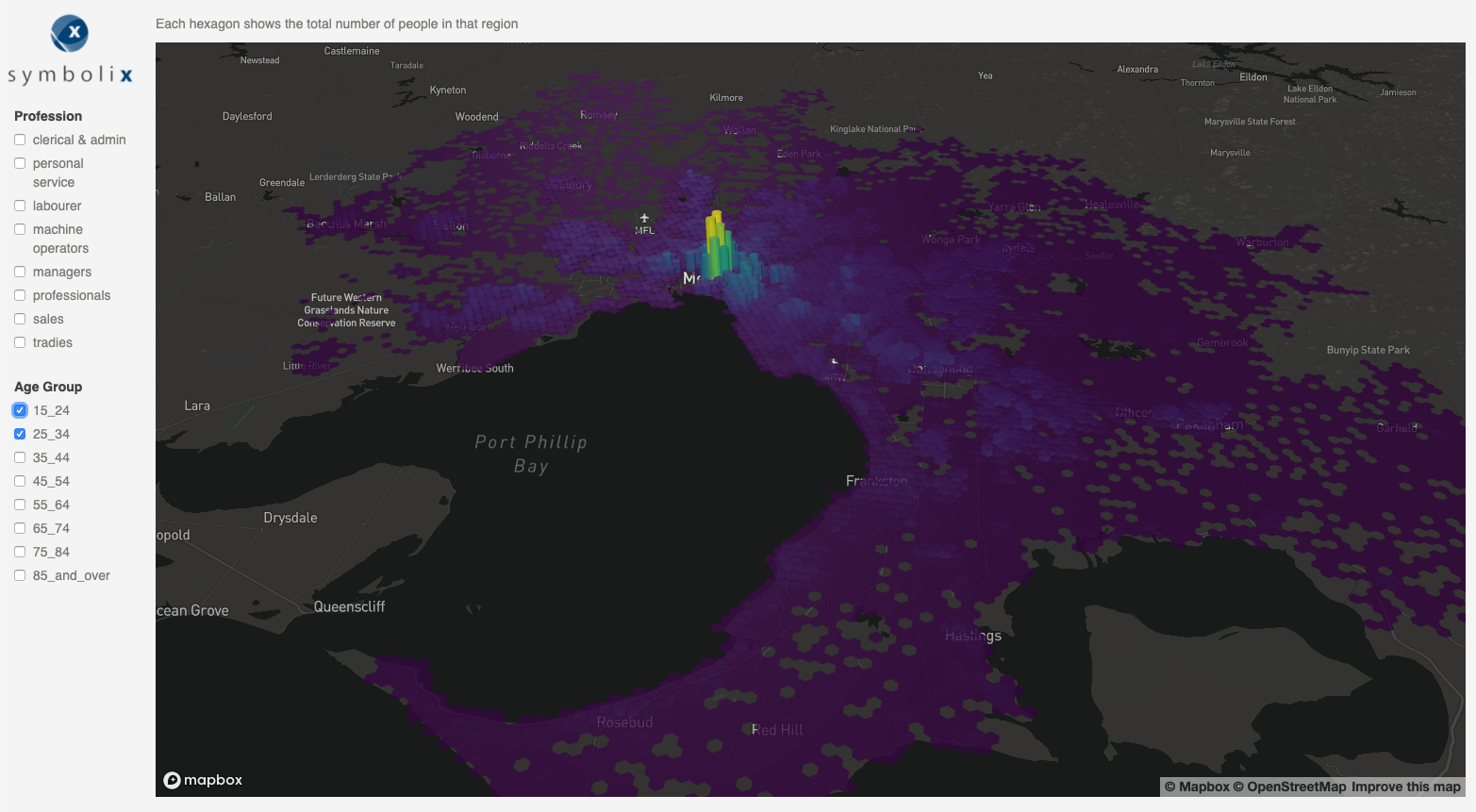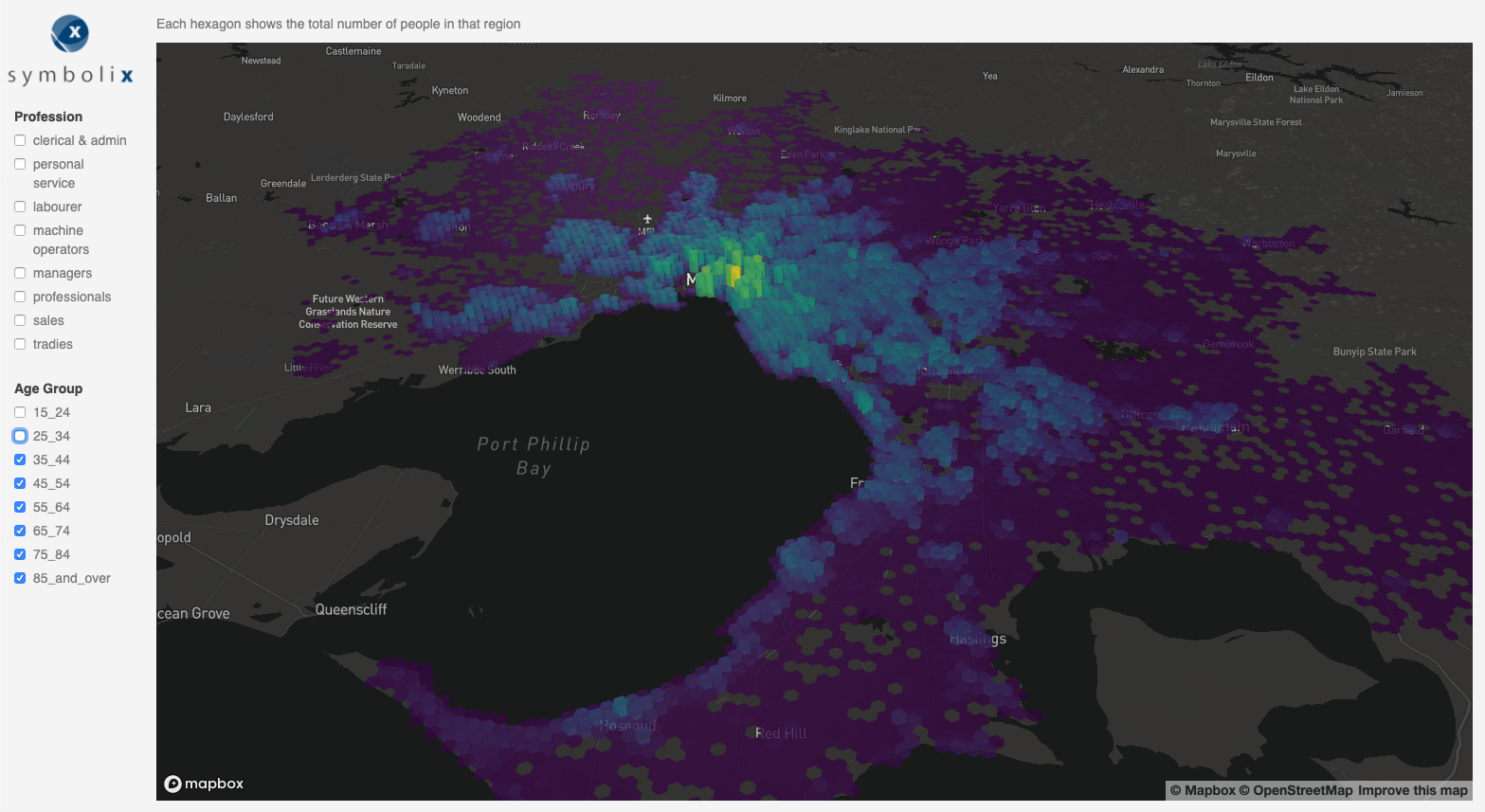Where do you want to live?
These two images show where the 15-34 (top) and 35+ year-olds, Melbourne workers live. (For those who don’t know the landscape, the city centre is right under the 15-34 group).


But does it really have to be this way?
As a lot of us are coming to terms with remote working, and our employers are seeing benefits thereof, is there any reason why we need to cram thousands of people into apartment blocks near their place of work? Or make people commute on crowded roads and public transport, to a sterile office full of strangers with annoying habits, whom you’d rather not have to interact with first thing in the morning?
So that begs the question, where would you live if you didn’t have to commute to work?
Explore the workforce
We’ve made a small dashboard so you can explore where the current workforce lives.
Now you may be asking, how accurate is this? Well, when I moved to Melbourne I was in the 25-34 group and I lived right in the center. Now I’m in the 35-44 group, and I now live slightly outside the centre on the coast. So, from a sample of 1, this dashboard is 100% accurate.
How is this possible?
These maps are powered by our Twin Cities dataset Twin Cities dataset .
To make Twin Cities we’ve combined the census and the national address list, and made a synthetic population that statistically represents the actual population of Victoria. This population is literally individual people people living their lives, dwelling in their homes, going to work, and generally being.
I say “statistically represents” because we can’t actually use real people, that would breach all kinds of privacy laws. But for all intents and purposes it is a pretty good approximation of the people of Victoria.
What’s the point?
Now this dashboard may appear simple, but rest assured it’s just the beginning.
Knowing where people live (not literally each individual person, but statisticaly), their ages, demographics, travel requirements, family structure, household size, household type, etc, we can answer a lot more complex problems.
- We can model how changes in work patterns impact networks (roads, electric, utilities)
- We can predict what services will be required and where (e.g. aged care), based on the demographics in a few years’ time
And not just for Victoria, we have this data available for the whole of Australia.
What do you want to know?
If you had access to this type of data, what sort of questions would you like answers to? Perhaps
- Where is active-transport infrastructure needed / wanted?
- Who would use public transport if it was more accessible?
- How much time is spent commuting, rather than being productive (either at work or home)?
Or you may want to know how to build a super-awesome dashboard like this yourself?
To tell us what you need, or to find out about putting including your own organisation into this dataset, drop us a line
